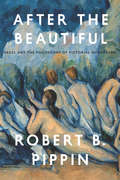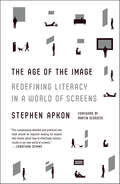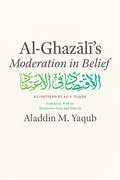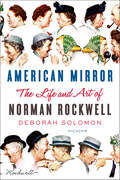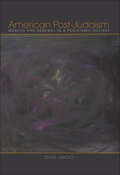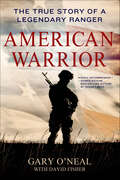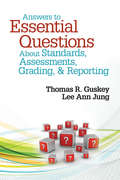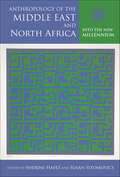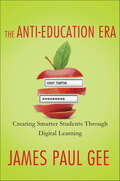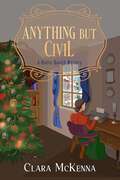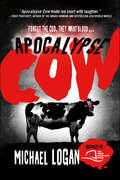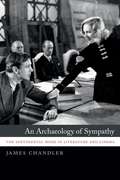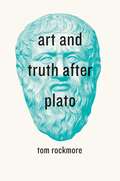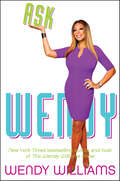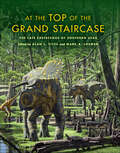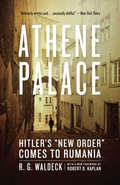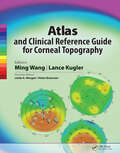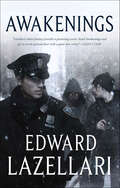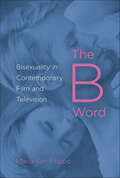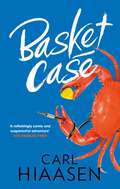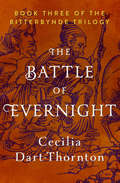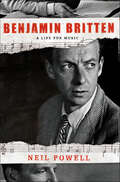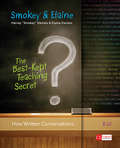- Table View
- List View
After the Beautiful: Hegel and the Philosophy of Pictorial Modernism
by Robert B. PippinIn his Berlin lectures on fine art, Hegel argued that art involves a unique form of aesthetic intelligibility—the expression of a distinct collective self-understanding that develops through historical time. Hegel’s approach to art has been influential in a number of different contexts, but in a twist of historical irony Hegel would die just before the most radical artistic revolution in history: modernism. In After the Beautiful, Robert B. Pippin, looking at modernist paintings by artists such as Édouard Manet and Paul Cézanne through Hegel’s lens, does what Hegel never had the chance to do. While Hegel could never engage modernist painting, he did have an understanding of modernity, and in it, art—he famously asserted—was “a thing of the past,” no longer an important vehicle of self-understanding and no longer an indispensable expression of human meaning. Pippin offers a sophisticated exploration of Hegel’s position and its implications. He also shows that had Hegel known how the social institutions of his day would ultimately fail to achieve his own version of genuine equality, a mutuality of recognition, he would have had to explore a different, new role for art in modernity. After laying this groundwork, Pippin goes on to illuminate the dimensions of Hegel’s aesthetic approach in the path-breaking works of Manet, the “grandfather of modernism,” drawing on art historians T. J. Clark and Michael Fried to do so. He concludes with a look at Cézanne, the “father of modernism,” this time as his works illuminate the relationship between Hegel and the philosopher who would challenge Hegel’s account of both modernity and art—Martin Heidegger. Elegantly inter-weaving philosophy and art history, After the Beautiful is a stunning reassessment of the modernist project. It gets at the core of the significance of modernism itself and what it means in general for art to have a history. Ultimately, it is a testament, via Hegel, to the distinctive philosophical achievements of modernist art in the unsettled, tumultuous era we have inherited.
The Age of the Image: Redefining Literacy in a World of Screens
by Stephen ApkonAn urgent, erudite, and practical book that redefines literacy to embrace how we think and communicate nowWe live in a world that is awash in visual storytelling. The recent technological revolutions in video recording, editing, and distribution are more akin to the development of movable type than any other such revolution in the last five hundred years. And yet we are not popularly cognizant of or conversant with visual storytelling's grammar, the coded messages of its style, and the practical components of its production. We are largely, in a word, illiterate. But this is not a gloomy diagnosis of the collapse of civilization; rather, it is a celebration of the progress we've made and an exhortation and a plan to seize the potential we're poised to enjoy. The rules that define effective visual storytelling—much like the rules that define written language—do in fact exist, and Stephen Apkon has long experience in deploying them, teaching them, and witnessing their power in the classroom and beyond. In The Age of the Image, drawing on the history of literacy—from scroll to codex, scribes to printing presses, SMS to social media—on the science of how various forms of storytelling work on the human brain, and on the practical value of literacy in real-world situations, Apkon convincingly argues that now is the time to transform the way we teach, create, and communicate so that we can all step forward together into a rich and stimulating future.
Al-Ghazali's "Moderation in Belief": Al-Iqti?ad Fi Al-I ' Tiqad
by Al-GhazaliCenturies after his death, al-Ghazali remains one of the most influential figures of the Islamic intellectual tradition. Although he is best known for his Incoherence of the Philosophers, Moderation in Belief is his most profound work of philosophical theology. In it, he offers what scholars consider to be the best defense of the Ash'arite school of Islamic theology that gained acceptance within orthodox Sunni theology in the twelfth century, though he also diverges from Ash'arism with his more rationalist approach to the Quran. Together with The Incoherence of the Philosophers, Moderation in Belief informs many subsequent theological debates, and its influence extends beyond the Islamic tradition, informing broader questions within Western philosophical and theological thought. The first complete English-language edition of Moderation in Belief, this new annotated translation by Aladdin M. Yaqub draws on the most esteemed critical editions of the Arabic texts and offers detailed commentary that analyzes and reconstructs the arguments found in the work’s four treatises. Explanations of the historical and intellectual background of the texts also enable readers with a limited knowledge of classical Arabic to fully explore al-Ghazali and this foundational text for the first time. With the recent resurgence of interest in Islamic philosophy and the conflict between philosophy and religion, this new translation will be a welcome addition to the scholarship.
American Mirror: The Life and Art of Norman Rockwell
by Deborah SolomonA NEW YORK TIMES BOOK REVIEW NOTABLE BOOK OF THE YEAR A FINALIST FOR THE LOS ANGELES TIMES BOOK PRIZE IN BIOGRAPHY AND SHORTLISTED FOR THE PEN/JACQUELINE BOGRAD WELD AWARD FOR BIOGRAPHY"Welcome to Rockwell Land," writes Deborah Solomon in the introduction to this spirited and authoritative biography of the painter who provided twentieth-century America with a defining image of itself. As the star illustrator of The Saturday Evening Post for nearly half a century, Norman Rockwell mingled fact and fiction in paintings that reflected the we-the-people, communitarian ideals of American democracy. Freckled Boy Scouts and their mutts, sprightly grandmothers, a young man standing up to speak at a town hall meeting, a little black girl named Ruby Bridges walking into an all-white school—here was an America whose citizens seemed to believe in equality and gladness for all.Who was this man who served as our unofficial "artist in chief" and bolstered our country's national identity? Behind the folksy, pipe-smoking façade lay a surprisingly complex figure—a lonely painter who suffered from depression and was consumed by a sense of inadequacy. He wound up in treatment with the celebrated psychoanalyst Erik Erikson. In fact, Rockwell moved to Stockbridge, Massachusetts so that he and his wife could be near Austen Riggs, a leading psychiatric hospital. "What's interesting is how Rockwell's personal desire for inclusion and normalcy spoke to the national desire for inclusion and normalcy," writes Solomon. "His work mirrors his own temperament—his sense of humor, his fear of depths—and struck Americans as a truer version of themselves than the sallow, solemn, hard-bitten Puritans they knew from eighteenth-century portraits."Deborah Solomon, a biographer and art critic, draws on a wealth of unpublished letters and documents to explore the relationship between Rockwell's despairing personality and his genius for reflecting America's brightest hopes. "The thrill of his work," she writes, "is that he was able to use a commercial form [that of magazine illustration] to thrash out his private obsessions." In American Mirror, Solomon trains her perceptive eye not only on Rockwell and his art but on the development of visual journalism as it evolved from illustration in the 1920s to photography in the 1930s to television in the 1950s. She offers vivid cameos of the many famous Americans whom Rockwell counted as friends, including President Dwight Eisenhower, the folk artist Grandma Moses, the rock musician Al Kooper, and the generation of now-forgotten painters who ushered in the Golden Age of illustration, especially J. C. Leyendecker, the reclusive legend who created the Arrow Collar Man.Although derided by critics in his lifetime as a mere illustrator whose work could not compete with that of the Abstract Expressionists and other modern art movements, Rockwell has since attracted a passionate following in the art world. His faith in the power of storytelling puts his work in sync with the current art scene. American Mirror brilliantly explains why he deserves to be remembered as an American master of the first rank.
American Post-Judaism: Identity and Renewal in a Postethnic Society (Religion in North America)
by Shaul MagidHow do American Jews identify as both Jewish and American? American Post-Judaism argues that Zionism and the Holocaust, two anchors of contemporary American Jewish identity, will no longer be centers of identity formation for future generations of American Jews. Shaul Magid articulates a new, post-ethnic American Jewishness. He discusses pragmatism and spirituality, monotheism and post-monotheism, Jesus, Jewish law, sainthood and self-realization, and the meaning of the Holocaust for those who have never known survivors. Magid presents Jewish Renewal as a movement that takes this radical cultural transition seriously in its strivings for a new era in Jewish thought and practice.
American Warrior: The True Story of a Legendary Ranger
by David Fisher Gary O'NealThe epic story of one of America's greatest soldiers, Ranger Hall of Fame member Gary O'Neal, who served his country for forty yearsChief Warrant Officer Gary O'Neal is no ordinary soldier. For nearly forty years, he has fought America's enemies, becoming one of the greatest Warriors this nation has ever known. Part Native American, O'Neal was trained in both military combat and the ways of his native people, combining his commitment to freedom with his respect for the enemy, his technical fighting skills with his fierce warrior spirit.From his first tour in Vietnam at seventeen to fighting in both Gulf wars, O'Neal was nothing less than a super soldier. A minefield of aggression bordering on a justice-seeking vigilante, O'Neal kept fighting even when wounded, refusing to surrender in the face of nine serious injuries and being left more than once. O'Neal earned countless military honors as a member of the elite Army Rangers corps, a founding member of the legendary first Department of Defense antiterrorist team, a member of the Golden Knights Parachuting Team, and more, devoting his life to training the next generation of soldiers. His unbelievable true stories are both shocking and moving, a reminder of what it means to be a true American hero.In O'Neal's own words, he "wasn't born a warrior"—life made him one. American Warrior will serve as inspiration for American men and women in uniform today, as well as appeal to the countless veterans who served their country alongside O'Neal.
Answers to Essential Questions About Standards, Assessments, Grading, and Reporting
by Lee Ann Jung Thomas R. GuskeyThe definitive guidebook to the complex terrain of 21st-century standards!Standards, assessments, grading, and reporting provide the foundation for nearly every initiative in modern education reform. But what do these terms actually mean—and what changes in each area will bring about the improvements teachers and school leaders want to see? Here, Thomas R. Guskey and Lee Ann Jung collect the essential questions that stymie educators, and give each one a short, simple, jargon-free response.Perfect for new teacher induction or professional learning on Common Core Standards initiatives, this book offers:A vocabulary and frame of reference to share with other educatorsAn understanding of effective implementation in standards, assessments, grading, and reportingSpecific ideas for purposeful actionOrganized in a unique, accessible Q&A format, this easy-to-use guide gives educators the common ground they need for successful improvement efforts."This text is a useful tool that educators can use to build common definitions about frequently used and misunderstood educational terms within their state, district, or school. Only when educators have the same understanding of ′formative assessment′ or ′grade reporting′ can they be implemented with fidelity."—Julie Quinn, Accountability SpecialistUtah State Office of Education, Salt Lake City, UT"Written in small sections, this book explains well how we assess, why we use different assessments, and asks guiding questions for application of assessments. I highly recommend this book for anyone interested in educational assessments."—Jeanne Collins, SuperintendentBurlington School District, VT
Answers to Essential Questions About Standards, Assessments, Grading, and Reporting
by Lee Ann Jung Thomas R. GuskeyThe definitive guidebook to the complex terrain of 21st-century standards!Standards, assessments, grading, and reporting provide the foundation for nearly every initiative in modern education reform. But what do these terms actually mean—and what changes in each area will bring about the improvements teachers and school leaders want to see? Here, Thomas R. Guskey and Lee Ann Jung collect the essential questions that stymie educators, and give each one a short, simple, jargon-free response.Perfect for new teacher induction or professional learning on Common Core Standards initiatives, this book offers:A vocabulary and frame of reference to share with other educatorsAn understanding of effective implementation in standards, assessments, grading, and reportingSpecific ideas for purposeful actionOrganized in a unique, accessible Q&A format, this easy-to-use guide gives educators the common ground they need for successful improvement efforts."This text is a useful tool that educators can use to build common definitions about frequently used and misunderstood educational terms within their state, district, or school. Only when educators have the same understanding of ′formative assessment′ or ′grade reporting′ can they be implemented with fidelity."—Julie Quinn, Accountability SpecialistUtah State Office of Education, Salt Lake City, UT"Written in small sections, this book explains well how we assess, why we use different assessments, and asks guiding questions for application of assessments. I highly recommend this book for anyone interested in educational assessments."—Jeanne Collins, SuperintendentBurlington School District, VT
Anthropology of the Middle East and North Africa: Into the New Millennium (Public Cultures Of The Middle East And North Africa Ser.)
by Sherine Hafez and Susan SlyomovicsThis volume combines ethnographic accounts of fieldwork with overviews of recent anthropological literature about the region on topics such as Islam, gender, youth, and new media. It addresses contemporary debates about modernity, nation building, and the link between the ideology of power and the production of knowledge. Contributors include established and emerging scholars known for the depth and quality of their ethnographic writing and for their interventions in current theory.
The Anti-Education Era: Creating Smarter Students through Digital Learning
by James Paul GeeOne of the first champions of the positive effects of gaming reveals the dark side of today's digital and social media Today's schools are eager to use the latest technology in the classroom, but rather than improving learning, the new e-media can just as easily narrow students' horizons. Education innovator James Paul Gee first documented the educational benefits of gaming a decade ago in his classic What Video Games Have to Teach Us About Learning and Literacy. Now, with digital and social media at the center of modern life, he issues an important warning that groundbreaking new technologies, far from revolutionizing schooling, can stymie the next generation's ability to resolve deep global challenges. The solution-and perhaps our children's future-lies in what Gee calls synchronized intelligence, a way of organizing people and their digital tools to solve problems, produce knowledge, and allow people to count and contribute. Gee explores important strategies and tools for today's parents, educators, and policy makers, including virtual worlds, artificial tutors, and ways to create collective intelligence where everyday people can solve hard problems. By harnessing the power of human creativity with interactional and technological sophistication we can finally overcome the limitations of today's failing educational system and solve problems in our high-risk global world. The Anti-Education Era is a powerful and important call to reshape digital learning, engage children in a meaningful educational experience, and bridge inequality.
Anything But Civil (A\hattie Davish Mystery Ser. #2)
by Anna Loan-WilseyIn this historical mystery from the &“superb&” Hattie Davish series, the traveling secretary discovers some Civil War grudges are still deadly twenty-five years on (Library Journal). Hattie Davish is delighted to be ably assisting her wealthy employer, Sir Arthur Windom-Greene, an English scholar who is fascinated by the American Civil War and who is hard at work putting together a definitive biography of Union general Cornelius Starrett. Their research takes them to the small town of Galena, Illinois, where they quickly learn that the twenty-five years since the war&’s end have done little to heal old wounds. Distrust and betrayal seem to linger in everyone&’s minds—none more so than General Starrett&’s own pompous son, Henry. Hattie is certain he has something to do with a string of bizarre incidents that have recently plagued the town—and her suspicions are bluntly confirmed when the much-disliked Henry turns up dead. Between her work for Sir Arthur, preparing for Christmas, and unscheduled visitors from her past, Hattie hardly has time to investigate a murder—but her curiosity prevails, and she soon finds herself lost in a labyrinth of secrets and deceit that leads to more questions than answers . . . The bestselling author of A Lack of Temperance continues her Victorian-era mystery series that Emily Brightwell calls &“a welcome addition to the genre.&”
Apocalypse Cow (Apocalypse Cow Ser. #1)
by Michael LoganIf you think you've seen it all -- WORLD WAR Z, THE WALKING DEAD-- you haven't seen anything like this. From the twisted brain of Michael Logan comes Apocalypse Cow, a story about three unlikely heroes who must save Britain . . . from a rampaging horde of ZOMBIE COWS! Forget the cud. They want blood.It began with a cow that just wouldn't die. It would become an epidemic that transformed Britain's livestock into sneezing, slavering, flesh-craving four-legged zombies.And if that wasn't bad enough, the fate of the nation seems to rest on the shoulders of three unlikely heroes: an abattoir worker whose love life is non-existent thanks to the stench of death that clings to him, a teenage vegan with eczema and a weird crush on his maths teacher, and an inept journalist who wouldn't recognize a scoop if she tripped over one.As the nation descends into chaos, can they pool their resources, unlock a cure, and save the world?Three losers.Overwhelming odds.One outcome . . .Yup, we're screwed.
An Archaeology of Sympathy: The Sentimental Mode in Literature and Cinema
by James ChandlerIn the middle of the eighteenth century, something new made itself felt in European culture—a tone or style that came to be called the sentimental. The sentimental mode went on to shape not just literature, art, music, and cinema, but people’s very structures of feeling, their ways of doing and being. In what is sure to become a critical classic, An Archaeology of Sympathy challenges Sergei Eisenstein’s influential account of Dickens and early American film by tracing the unexpected history and intricate strategies of the sentimental mode and showing how it has been reimagined over the past three centuries. James Chandler begins with a look at Frank Capra and the Capraesque in American public life, then digs back to the eighteenth century to examine the sentimental substratum underlying Dickens and early cinema alike. With this surprising move, he reveals how literary spectatorship in the eighteenth century anticipated classic Hollywood films such as Capra’s It Happened One Night, Mr. Deeds Goes to Town, and It’s a Wonderful Life. Chandler then moves forward to romanticism and modernism—two cultural movements often seen as defined by their rejection of the sentimental—examining how authors like Mary Shelley, Joseph Conrad, James Joyce, and Virginia Woolf actually engaged with sentimental forms and themes in ways that left a mark on their work. Reaching from Laurence Sterne to the Coen brothers, An Archaeology of Sympathy casts new light on the long eighteenth century and the novelistic forebears of cinema and our modern world.
Art and Truth after Plato
by Tom RockmoreDespite its foundational role in the history of philosophy, Plato’s famous argument that art does not have access to truth or knowledge is now rarely examined, in part because recent philosophers have assumed that Plato’s challenge was resolved long ago. In Art and Truth after Plato, Tom Rockmore argues that Plato has in fact never been satisfactorily answered—and to demonstrate that, he offers a comprehensive account of Plato’s influence through nearly the whole history of Western aesthetics. Rockmore offers a cogent reading of the post-Platonic aesthetic tradition as a series of responses to Plato’s position, examining a stunning diversity of thinkers and ideas. He visits Aristotle’s Poetics, the medieval Christians, Kant’s Critique of Judgment, Hegel’s phenomenology, Marxism, social realism, Heidegger, and many other works and thinkers, ending with a powerful synthesis that lands on four central aesthetic arguments that philosophers have debated. More than a mere history of aesthetics, Art and Truth after Plato presents a fresh look at an ancient question, bringing it into contemporary relief.
The Art of Migration: Birds, Insects, and the Changing Seasons in Chicagoland
by John Bates Peggy Macnamara James H. BooneTiny ruby-throated hummingbirds weighing less than a nickel fly from the upper Midwest to Costa Rica every fall, crossing the six-hundred-mile Gulf of Mexico without a single stop. One of the many creatures that commute on the Mississippi Flyway as part of an annual migration, they pass along Chicago’s lakefront and through midwestern backyards on a path used by their species for millennia. This magnificent migrational dance takes place every year in Chicagoland, yet it is often missed by the region’s two-legged residents. The Art of Migration uncovers these extraordinary patterns that play out over the seasons. Readers are introduced to over two hundred of the birds and insects that traverse regions from the edge of Lake Superior to Lake Michigan and to the rivers that flow into the Mississippi. As the only artist in residence at the Field Museum, Peggy Macnamara has a unique vantage point for studying these patterns and capturing their distinctive traits. Her magnificent watercolor illustrations capture flocks, movement, and species-specific details. The illustrations are accompanied by text from museum staff and include details such as natural histories, notable features for identification, behavior, and how species have adapted to environmental changes. The book follows a gentle seasonal sequence and includes chapters on studying migration, artist’s notes on illustrating wildlife, and tips on the best ways to watch for birds and insects in the Chicago area. A perfect balance of science and art, The Art of Migration will prompt us to marvel anew at the remarkable spectacle going on around us.
Ask Wendy: Straight-Up Advice for All the Drama in Your Life
by Wendy WilliamsGo ahead . . . ask her anythingOver the radio and now on her popular TV talk show, Wendy Williams has always been approached for her blunt, in-your-face words of advice. How's she doin'? "Ask Wendy" has become more than just a fan-favorite TV segment; it's her calling card. Wendy has helped her viewers cope with everything from backstabbing girlfriends and deadbeat boyfriends to crazy mothers-in-law and jealous coworkers. Fans trust Wendy, even when her advice is tough to hear. She's earned her reputation as "the friend in your head."On TV Wendy only has a few minutes to respond to each audience member, but in Ask Wendy she goes deeper, answering questions sourced from viewers across the country. No question is off-limits and no situation is too outrageous for her to take on. Wendy shoots straight from those womanly hips of hers to help you manage all the crazy that comes into your life— keepin' it real by drawing on the personal experiences that have shaped her unique perspective. Wendy reveals never-before shared intimate secrets about struggling with weight, navigating rough times in her marriage, and learning to accept herself. Along with the usual girlfriend, boyfriend, and family drama, Wendy straight-talks on topics like style, body image, and office etiquette, and of course she tackles your wildest sex questions. If you've dealt with it, Wendy has a solution for it.Filled with fun personality quizzes, Wendy's laugh-out-loud anecdotes, and tons of spot-on advice, Ask Wendy will help readers to end the drama in their lives.
At the Top of the Grand Staircase: The Late Cretaceous of Southern Utah (Life of the Past)
by Alan L. Titus and Mark A. LoewenThe Grand Staircase-Escalante National Monument is the location of one of the best-known terrestrial records for the late Cretaceous. Prior fieldwork confirmed the richness of the area, but a major effort begun in the new century has documented over 2,000 new vertebrate fossil sites, provided new radiometric dates, and identified five new genera of ceratopsids, two new species of hadrosaur, a probable new genus of hypsilophodontid, new pachycephalosaurs and ankylosaurs, several kinds of theropods (including a new genus of oviraptor and a new tyrannosaur), plus the most complete specimen of a Late Cretaceous therizinosaur ever collected from North America, and much more. The research documented in this book is rewriting our understanding of Late Cretaceous paleobiogeography and dinosaur phyletics. At the Top of the Grand Staircase: The Late Cretaceous of Southern Utah is a major stepping stone toward a total synthesis of the ecology and evolution of the Late Cretaceous ecosystems of western North America.
Athene Palace: Hitler's "New Order" Comes to Rumania
by R.G. WaldeckOn the day that Paris fell to the Nazis, R. G. Waldeck was checking into the swankiest hotel in Bucharest, the Athene Palace. A cosmopolitan center during the war, the hotel was populated by Italian and German oilmen hoping to secure new business opportunities in Romania, international spies cloaked in fake identities, and Nazi officers whom Waldeck discovered to be intelligent but utterly bloodless. A German Jew and a reporter for Newsweek, Waldeck became a close observer of the Nazi invasion. As King Carol first tried to placate the Nazis, then abdicated the throne in favor of his son, Waldeck was dressing for dinners with diplomats and cozying up to Nazi officers to get insight and information. From her unique vantage, she watched as Romania, a country with a pro-totalitarian elite and a deep strain of anti-Semitism, suffered civil unrest, a German invasion, and an earthquake, before turning against the Nazis. A striking combination of social intimacy and disinterest political analysis, Athene Palace evokes the elegance and excitement of the dynamic international community in Bucharest before the world had comes to grips with the horrors of war and genocide. Waldeck’s account strikingly presents the finely wrought surface of dinner parties, polite discourse, and charisma, while recognizing the undercurrents of violence and greed that ran through the denizens of Athene Palace.
Atlas and Clinical Reference Guide for Corneal Topography
by Ming Wang Lance KuglerCorneal topography has become essentially a pattern recognition trade, best learned by viewing multiple images of representative patterns. In spite of this, currently available topography books focus only on the technology behind topography, or a particular application of topography, as opposed to presenting a comprehensive collection of topographic patterns that provide quick, consistent pattern recognition and identification. Drs. Wang and Kugler, along with Drs. Morgan and Boerman, look to fill this void with Atlas and Clinical Reference Guide for Corneal Topography.Atlas and Clinical Reference Guide for Corneal Topography is the first corneal topography book that lends itself to efficient image search and reference for busy clinicians at chair side. Organized into both map-based and disease-based sections, the book allows for quick reference in busy clinical situations. Images come from the commonly used topographers, the Zeiss Atlas and the Oculus Pentacam, but the principles of pattern recognition can be applied to any topographer. Due to the text’s large collection of topographic images and corresponding corneal conditions, Atlas and Clinical Reference Guide for Corneal Topography can be used side by side with the topographer.Designed as both a learning tool for students and a reference for clinicians to use when faced with a challenging topography interpretation, Atlas and Clinical Reference Guide for Corneal Topography will be appreciated by a wide spectrum of eye care professionals. General ophthalmologists, cataract and refractive surgeons, corneal specialists, optometrists, and ophthalmology residents and students will benefit from this invaluable atlas for corneal topography.
Awakenings: Guardians Of Aandor, Book One (Guardians of Aandor #1)
by Edward LazellariCal MacDonnell is a happily married New York City cop with a loving family. Seth Raincrest is a washed-up photographer who has alienated even his closest friends. The two have nothing in common—except that they both suffer from retrograde amnesia. It's as if they just appeared out of thin air thirteen years ago, and nothing has been able to restore their memories. Now their forgotten past has caught up to them with a vengeance.Cal's and Seth's lives are turned upside down as they are stalked by otherworldly beings who know about the men's past lives. But these creatures aren't here to help; they're intent on killing anyone who gets in their way. In the balance hangs the life of a child who might someday restore a broken empire to peace and prosperity. With no clue why they're being hunted, Cal and Seth must accept the aid of a strange and beautiful woman who has promised to unlock their secrets. The two must stay alive long enough to protect their loved ones, recover their true selves—and save two worlds from tyranny and destruction.Awakenings launches a captivating fantasy saga by an amazing and talented new storyteller.At the Publisher's request, this title is being sold without Digital Rights Management Software (DRM) applied.
The B Word: Bisexuality in Contemporary Film and Television
by Maria San FilippoOften disguised in public discourse by terms like "gay," "homoerotic," "homosocial," or "queer," bisexuality is strangely absent from queer studies and virtually untreated in film and media criticism. Maria San Filippo aims to explore the central role bisexuality plays in contemporary screen culture, establishing its importance in representation, marketing, and spectatorship. By examining a variety of media genres including art cinema, sexploitation cinema and vampire films, "bromances," and series television, San Filippo discovers "missed moments" where bisexual readings of these texts reveal a more malleable notion of subjectivity and eroticism. San Filippo's work moves beyond the subject of heteronormativity and responds to "compulsory monosexuality," where it's not necessarily a couple's gender that is at issue, but rather that an individual chooses one or the other. The B Word transcends dominant relational formation (gay, straight, or otherwise) and brings a discursive voice to the field of queer and film studies.
Basket Case (Vintage Crime/black Lizard Ser.)
by Carl HiaasenA rollicking and hilarious novel from the bestselling author of Squeeze Me and 'Florida's most entertainingly indignant social critic' (New York Times Book Review)Once a hotshot investigative reporter, Jack Tagger now bangs out obituaries for a South Florida daily, 'plotting to resurrect my newspaper career by yoking my byline to some famous stiff'. Jimmy Stoma, the infamous front man of Jimmy and the Slut Puppies, dead in a fishy-smelling scuba 'accident', might be the stiff of Jack's dreams - if only he can figure out what happened.Standing in the way are his ambitious young editor, who hasn't yet fired anyone but plans to 'break her cherry' on Jack; the rock star's pop-singer widow, who's using the occasion of her husband's death to relaunch her own career; and the soulless, profit-hungry owner of the newspaper, whom Jack once publicly humiliated at a stockholders' meeting.Using clues from the dead rock singer's music, Jack sets out to discover the truth, in another raucous, brilliant novel from the master of comic crime fiction, Carl Hiaasen.
The Battle of Evernight: The Ill-made Mute, The Lady Of The Sorrows, The Battle Of Evernight (The Bitterbynde Trilogy #3)
by Cecilia Dart-ThorntonThe Lady of the Sorrows embarks on a perilous quest in a wild realm of magic and malevolence to reunite with her enigmatic lover and end a terrible war To save her loved ones from catastrophe, the Lady of the Sorrows urgently seeks to uncover the secrets of her past. Yet those mysteries, once revealed, will be more extraordinary and harrowing than she could have imagined. The lady journeys to the terrible fortress of the Raven Prince in Evernight, despite the Bitterbynde curse that is distorting her memories and the onset of a debilitating malady for which a cure may never be found. As a battle for the destiny of the world begins, the lady must make a fateful decision. If she reveals what she knows, she will liberate 2 worlds—or incite the downfall of everything she loves. The stunning conclusion to her acclaimed Bitterbynde Trilogy, The Battle of Evernight is the crowning literary achievement of author Cecilia Dart-Thornton, who has been praised as Australia&’s J. R. R. Tolkien. Lyrical and breathtaking, a bold and bittersweet fantasy born from ancient legends and folklore passed down through the ages, it is a magnificent contribution to the canon of Western fantasy literature.
Benjamin Britten: A Life for Music
by Neil PowellThis spellbinding centenary biography by Neil Powell looks at the music, the life, and the legacy of the greatest British composer of the twentieth centuryBenjamin Britten was born on November 22, 1913, in the East Suffolk town of Lowestoft. Displaying a passion and proficiency for music at an early age, to the delight of his mother, Edith, a talented amateur musician herself, he began composing music when he was only five years old. After studying at the Royal College of Music, Britten went on to write documentary scores for the General Post Office Film Unit, where he met and collaborated with the poet W. H. Auden.Of more lasting importance was Britten's introduction in 1937 to the tenor Peter Pears, who was to become the inspirational center of his emotional and musical life. Their partnership lasted nearly four decades, during a dangerous time when homosexuality was illegal in England. Conscientious objectors, Britten and Pears followed Auden to America before the war began in 1939. While there, they joined the extraordinary Brooklyn ménage of George Davis, Louis MacNeice, and Paul Bowles.Eventually intense homesickness, provoked in part by George Crabbe's poem "Peter Grimes," drove the pair home to East Anglia in 1942 and gave Britten the inspiration for his finest opera. Throughout his career, Britten did not want modern music to be just for "the cultured few" and instead always composed his music to be "listenable-to." The shared quotidian lives of Britten and Pears unfold in this intimate biography and the story of two men who created a truly remarkable legacy.
The Best-Kept Teaching Secret: How Written Conversations Engage Kids, Activate Learning, Grow Fluent Writers . . . K-12 (Corwin Literacy)
by Elaine Daniels Smokey DanielsYour fast-track to student engagement Everywhere Smokey Daniels goes—every school he visits, every workshop he leads, every keynote he gives—there’s one teaching strategy that teachers embrace above all others. That single method for transforming students from passive spectators into active learners . . . for evoking curiosity, inspiring critical thinking, and building powerful writers along the way. Now, with Elaine Daniels as Smokey’s coauthor, that best-kept teaching secret is revealed to teachers at large: Written Conversations. Just what make Written Conversations so potent? An ongoing, thoughtful correspondence between students, and between students and their teachers, Written Conversations, above all else, catch and ride the wave of social interaction, which in turn makes school matter to kids. It’s that simple. Structure by structure, from beginning to end, Smokey and Elaine describe four variations of these "silent writing-to-learn discussions," during which all students in a classroom think and "talk" at once in writing, instead of one at a time out loud. How Written Conversations Work It all starts with mini-memos, short student letters that teachers use to introduce, extend, and assess class work. Then come dialogue journals, where pairs dive deeply into academic subjects. Next, groups of three or four students join in extended written discussions called write-arounds. Finally, kids take their thinking online, where they enjoy digital discussions with partners from their own classroom—and with kids from around the world. . . . all the while, you are supported by detailed descriptions of each structure, lessons, and annotated student samples—making this the most practical teaching book in recent memory. What kid wouldn’t want to refine written argument skills, clarify a point, or defend another’s viewpoint, when the "audience" is people who matter? And Yes, Written Conversations align with the Common Core Standards for writing, reading, language, and speaking and listening, taking students well beyond the standards themselves.
